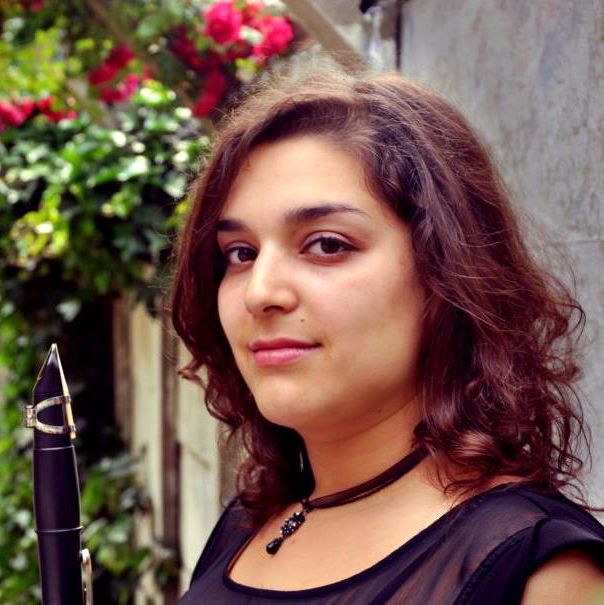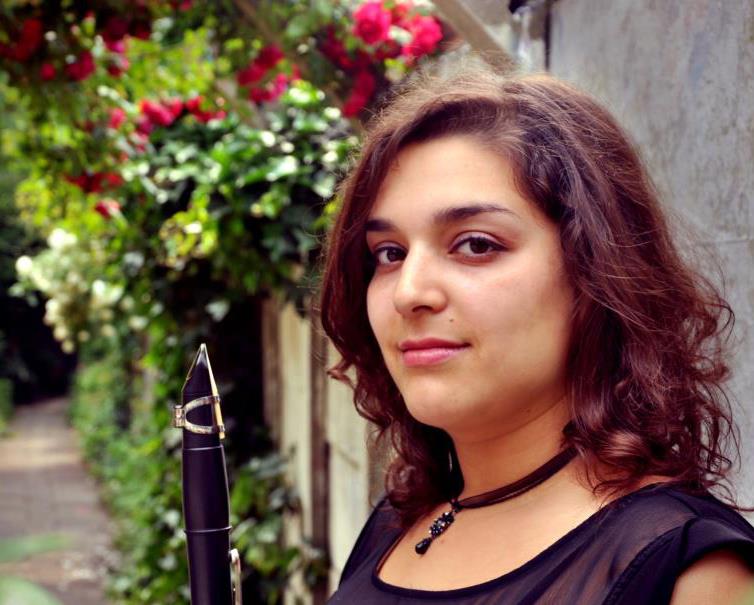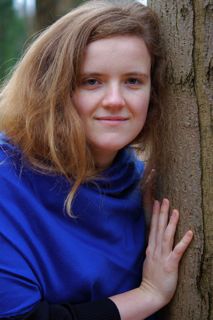‘Between Despair and Hope’ met klarinet en piano is een recital, dat in sfeer en repertoire aansluit bij 4 mei: Dodenherdenking, maar ook naar voren kijkt. In de woorden van klainettiste Mor Levin, die het programma heeft samengesteld:
I have put together a concert, which program I call “Between Despair and Hope”.
This is a concept which combines music, that I find beautiful and emotionally charged, and a part in the history of the Europeans Jews, which for me also relates to my family history.
In this concert, I will connect between three musical works of three composers, and the music and paintings of a fourth composer. All of which were European Jews, living and creating in the 20th century, which were forced to flee their home-countries due to the Nazi/ Fascist regime.
Alongside performing the pieces, I will make a verbal introduction about each of the composers, and link between their life stories.
Over de keuze van het programma ‘Between Despair and Hope’ schrijft Mor Levin:
‘My name is Mor Levin. I am an Israeli clarinet player, currently based in Amsterdam. I have recently earned a master degree in Clarinet and Bass-Clarinet from the Conservatory of Amsterdam, studying with Harmen de Boer, Arno Piters and Erik van Deuren.
It was during my study in Amsterdam that I first discovered the wonderful music by the Jewish-Soviet composer Mieczyslaw Weinberg. It was not only the music that touched me, but also the amazing resemblance his life story had to do with the story of my late grandfather: both of them were born and raised in Poland and fled to the USSR in order to survive the second world war. They both lost all of their family members who stayed behind in Poland. Both of them have also lived in the same place in Russia for a period.
This discovery motivated me to form a concert that includes the sonata for Clarinet and Piano by Weinberg, amongst pieces that were written by other three Jewish-European composers, who- like Weinberg- fled their home country and Europe in order to escape the Nazi regime.
During my research about these composers, I was amazed to discover the big and interesting selection of pictorial work by the renowned Jewish-Austrian composer Arnold Schönberg. I then decided to combine the projection of his paintings in the course of the concert, which adds a visual and associative dimension to the performance.
In addition to being one of the most important and influential composers of all times, Schönberg was also a painter of a highly considerable ability which paintings are comparable to the work of Wassily Kandinsky and Franz Marc.
I decided to name the program “Between Despair and Hope”: a name that is primarily related to the life stories of the composers. It is symbolic to the history of the Jewish people and is also a feeling that characterizes many artists, at times.
Programma:
1. Mieczyslaw Weinberg (Moishe Vainberg), (1919-1996): Sonata for clarinet and piano, Op.28 (1945)
2. Paul Ben-Haim (1897-1984): “Three songs without words” (1952), version for clarinet and piano.
The composer, in this piece, set out to paint “tone pictures of an oriental mood”. The first song, “Arioso”, is possibly inspired by a summer day’s pitiless heat in the bare Judean hills. The second song, “Ballad”, is picturing the monotonous babbling of an oriental story teller, while the third song, the “Sephardic melody” means for the composer ” a veritable pearl” to which he has “only given a setting”.
3. Arnold Schönberg (1874-1951): Drei Klavierstücke, Op.11 and paintings
Schönberg was an important, revolutionary and controversial composer, and a painter. He has been associated with the expressionist movement in German Poetry and art, and was the leader of the “Second Viennese school” in composition.
Alongside his composing career, Schönberg was a painter of considerable ability, whose pictures were considered good enough to exhibit alongside those of Franz Marc and Wassily Kandinsky.
In this concert, I would like to present Schönberg as a painter, by using his paintings alongside the pieces of the other three composers.
4. Mario Castelnuovo-Tedesco (1895-1968): Sonata for clarinet and piano, Op.128 (1945)
Musici:
Mor Levin: clarinet and concept
Born in Israel in 1985, Clarinetist Mor Levin is a graduate of the Buchmann-Mehta school of music in Tel-Aviv, and a graduate of the Master program at the Conservatory of Amsterdam with specialization in Clarinet and Bass-Clarinet
In Israel, she has been invited to play in all the orchestras, including the Israel Philharmonic orchestra. She has also recorded various concerts to the media. In Benelux, she has been invited to play with renowned ensembles, such as the ASKO I Schönberg Ensemble, Holland Symponia and the Flemish Opera orchestra. Since 2012, Mor is a member of the “Baltic youth philharmonic”, a young-talent orchestra with which she has been touring around Europe. She has worked with world renown conductors such as Zubin Mehta, Kurt Masur and Maxim Vengerov.
Mor is a chamber music enthusiast, and has performed an extensive amount of chamber pieces around Europe, USA, Canada, Israel and China. She has also performed as a soloist with the Israel Chamber Orchestra, under the direction of Vahagn Papian.
Anne Vainberg – Piano:
Australian pianist Anne Veinberg (1986) is a versatile pianist, encompassing repertoire of a wide range of stylistic influences.
She completed her Bachelor of Music degree at the University of Melbourne, and her Master of Music degree at the Conservatory of Amsterdam. Anne has performed in Australia and Europe, as recital and concerto soloist, improvisor, as a chamber-music and large ensemble player.
She was the winner of the “Grachten-festival” music competition in the Netherlands in 2009.
She regularly collaborates with composers, commissioning and premiering new works.



